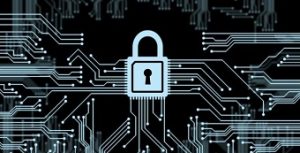
It used to be that the most important aspect of implementing an electronic access control system was the simple control of who went where when. Today, the requirements of these sophisticated systems goes beyond. Indeed, one of the security challenges frequently heard surrounds denying hackers, cyber-punks and associated bad actors from utilising the access system as a gateway to an organisation’s sensitive IT network.
As an RFID access card gets close to its reader, it begins to wirelessly transmit its binary code. If using 125KHz proximity, then the wireless protocol is typically Wiegand, an older technology that can no longer provide the security needed today. In a worst case scenario hackers could simply lift that fixed Wiegand clear text, retransmit it to the card reader, and, from there, physically enter the facility and thereby the network, allowing these characters free rein to target the IT system. Many law enforcement agencies are starting to take action. For instance, the United States Federal Trade Commission (FTC) has been apprised of so many cyber attacks, and the threat these hacks pose, that it is now holding companies responsible for not implementing good cyber security practices. As a result, data encryption is part of good practice and is, indeed, an opportunity for the security industry.
Scott Lindley, President at Farpointe Data, says that the three major elements to encryption are authentication, credentials and settings. Integrity assures that digital information is uncorrupted and only accessed or modified by those authorised. (“Nobody has messed with this number.”) Data must not be changed in transit or altered by an unauthorized person or program. If data gets corrupted, then redundancies restore the affected data to its original state.
Non-repudiation means that users cannot deny the authenticity of their signature on a document or the sending of a message that they originated. (“Nice try but we know that YOU did this.”) A digital signature not only to ensures that a message or document has been electronically signed by the person but also ensures that a person cannot later deny they furnished it.
Encryption consists of both an algorithm and a key. Once a number is encrypted, the system needs to have a key to decrypt the resultant ciphertext into its original form. There are two varieties of algorithms – private (symmetric) and public (asymmetric).
Private key encryption uses the same key for both encryption and decryption. Be aware – if the key is lost or intercepted, messages may be compromised. Public key infrastructure (PKI) uses two different but mathematically linked keys. One key is private and the other is public.
With PKI, either key can be used for encryption or decryption. When one key is used to encrypt, the other is used to decrypt. The public portion of the key is easily obtained for all users. However, only the receiving party has access to the decryption key allowing messages to be read. Systems may use private encryption to encrypt data transmissions but use public encryption to encrypt and exchange the secret key. Using one or both these algorithms, access credential communications may be encrypted.
Many modern cards support cryptography. Look for terms such as 3DES, AES (which the government uses to protect classified information), TEA and RSA .
When adding encryption into an access control system and if concerned with hacking, then consideration should be given to more secure 13.56 MHz smart cards over 125 KHz proximity cards. The latest Mifare standard, Desfire EV1, includes a cryptographic module on the card, adding an additional layer of encryption to the card/reader transaction. Desfire EV1 protection is especially important for customers wanting to use secure multi-application cards for access management, public transportation or closed-loop e-payment. Another valuable option is Valid ID, an anti-tamper feature for contactless smartcard readers, cards and tags. Embedded, it adds yet an additional layer of authentication and integrity assurance to traditional Mifare smartcards. Valid ID helps verify that sensitive access data programmed to a card or tag is indeed genuine and not counterfeit.
Lindley concludes: “Whether you need to guard against state sponsored terrorists or the neighbourhood teen from hacking the electronic access control systems that you implement, security today starts with encryption. But, that’s just a beginning. To take steps that will further hinder hackers, ask for the manufacturer’s Cyber security Vulnerability Checklist.”











